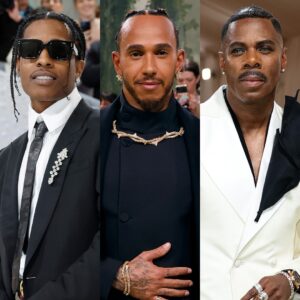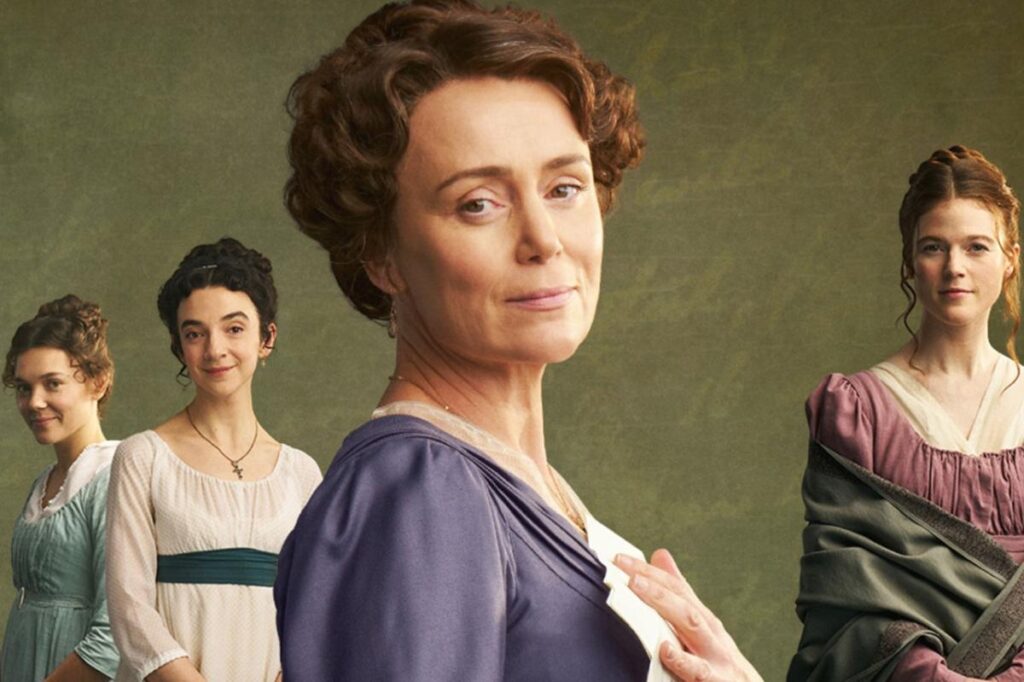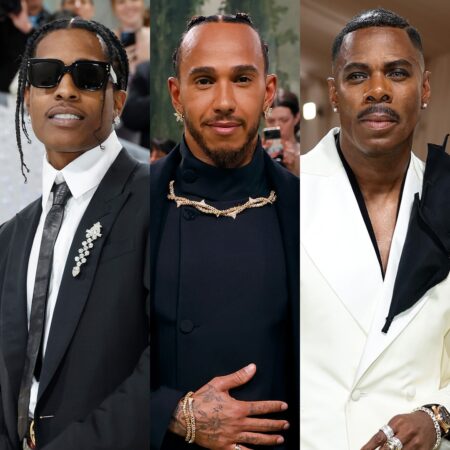In Gill Hornby’s 2020 novel Miss Austen, the author builds a story around the fact that Jane Austen’s older sister Cassandra burned the letters Jane wrote to a friend, Eliza Fowle. The letters Cassandra finds allows her to flash back to a happier time, when both she and Jane were as close as two sisters could be. Given the back and forth timeline of the novel, it figured to be a tough adaptation. But when you cast Keeley Hawes in the lead role, you’re off to a good start.
MISS AUSTEN: STREAM IT OR SKIP IT?
Opening Shot: Cassandra Austen (Keeley Hawes) is in bed, reading Persuasion, one of her late sister Jane Austen’s best-known novels, before she gets up and faces a new day.
The Gist: Cassandra lives alone on a big country estate; her maid hands her a letter from Isabella Fowle (Rose Leslie), saying that her father Fulwar (Felix Scott) is dying, but there is no need for Cassandra to visit, since they have things well in hand.
Ignoring Isabella’s request, Cassandra immediately packs to make the journey to the Fowle estate, arriving in a driving rainstorm and completely surprising Isabella. Also there offering support is Cassandra’s sister-in-law Mary (Jessica Hynes) . Cassandra says she’s there to say goodbye to Fulwar, the brother of Tom Fowle (Calam Lynch), the love of Cassandra’s life and her late fiancé, but she’s really there to find letters written by her late sister Jane (Patsy Ferran) to Mary’s sister Eliza (Madeline Walker), who was also Fulwar’s wife.
When she finds the letters, she reminisces about the heady days when her younger self (Synnøve Karlsen) and Jane were thick as thieves, laughing together while locked away in one of their bedrooms. Jane seemed to have no interest in men or romance, just writing what she observed about the high society world around her.
Cassy is riding high since Tom, her longtime boyfriend has finally asked her to marry him. However, Tom is about to embark on a sailing expedition to the West Indies. He pulls Cassy aside and tells her that he’s set it up in his will that she gets all his money if he doesn’t come back, and to go on and marry someone else if he doesn’t make it. She vows to never marry anyone but him. Jane laments the fact that when Tom does come back and he and Cassy get married, the relationship the sisters have will fundamentally change.
Back to the older Cassandra, who decides to stay with Isabella when she learns that the new vicar taking over for Fulwar, will need to occupy the estate in two weeks, much faster than the transition usually is. There also seems to be a lot of tension with Mary, who was married Cassandra’s brother James (Patrick Knowles).
As Cassandra reads the letters, we see Cassy make attempts to pair a young, shy Mary (Liv Hill) with James, much to Jane’s consternation. Some of that consternation is confirmed when older Cassandra finds a letter from Mary to Eliza that completely lied about Cassy’s reaction to Tom’s death.
What Shows Will It Remind You Of? While Miss Austen was adapted by Andrea Gibb from Gill Hornby’s novel of the same name, the vibe of the show is largely the same as any number of Jane Austen adaptations, like Sense And Sensibility, Pride And Prejudice and Sandition.
Our Take: Miss Austen shines whenever Keeley Hawes is on screen as the older Cassandra, who has suffered a lot of loss in her life and is trying to find some identity in a world where at least two of her siblings and her fiancé have long since left her. There’s an inherent loneliness in Hawes’ performance, mixed with the determination Cassandra has always seemed to have to forge her own path.
But, both in Hawes’ scenes and in the flashbacks with Karlsen as the young-and-in-love Cassy, the love she has for Jane is evident. We enjoyed Ferran’s performance as the young Jane Austen, already casting a wary eye towards society life in the Regency era, and how young women are treated more like property than independent human beings. She certainly believes that her brother James, for instance, should be with the widow he’s truly attracted to instead of Mary, who seems more like an arranged pairing than anything else. Mostly, though, seeing how Jane operates via her relationship with Cassy provides perspective on how tight the two of them were, at least in the original novel’s view of things.
Cassandra’s purpose in finding and keeping the letters is surely more than just reminiscence. It does seem like she wants to protect her sister’s legacy, and perhaps there is something in those letters she doesn’t want to be made public. And they only seem to stoke her anger at Mary, whom she prodded into marrying James in the first place way back when.
Of course, there is lots of confusion about how intertwined the Austens and Fowles are. If you’re not paying super-close attention, you start to wonder who is exactly who. It also doesn’t help that, in the timeline where Cassandra is played by Hawes, half the people they’re referring to are dead and not on screen. But if you concentrate on the fundamental relationships in this series, and Hawes’ performance, that confusion probably won’t matter as much.
Sex and Skin: None.
Parting Shot: Cassandra crumples up Mary’s letter full of lies and puts it in her pocket, then she composes herself.
Sleeper Star: We’ll give this Mirren Mack as The Fowles’ maid Dinah, who seems to be perpetually suspicious of Cassandra’s presence.
Most Pilot-y Line: When the new vicar, Mr. Dundas (Thomas Coombes), is introduced to Cassandra, he can’t help but gush about how much of a fan of Jane Austen he is. When he says how sorry he was that Jane died so young, Cassandra respectfully snarks, “Then allow me to say how sorry I am for your great personal loss.”
Our Call: STREAM IT. While it may take you awhile to figure out how everyone in Miss Austen is connected to each other, the performances of Hawes as the older Cassandra and Ferran as the young Jane will keep you interested in the story.
Joel Keller (@joelkeller) writes about food, entertainment, parenting and tech, but he doesn’t kid himself: he’s a TV junkie. His writing has appeared in the New York Times, Slate, Salon, RollingStone.com, VanityFair.com, Fast Company and elsewhere.
Read the full article here








